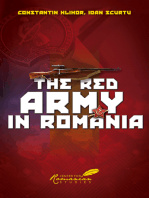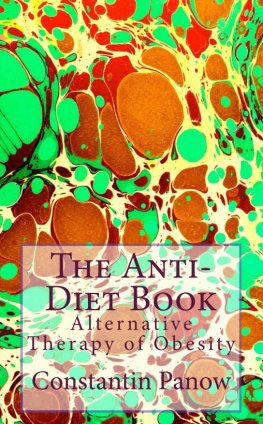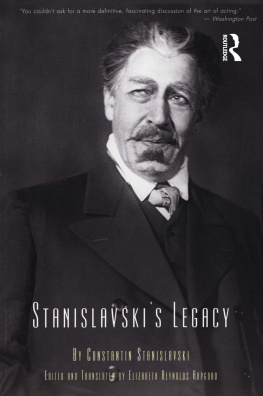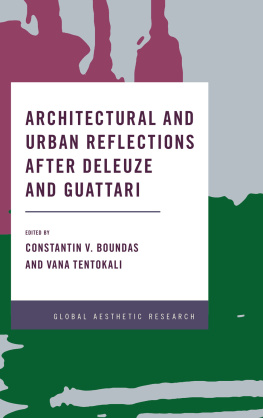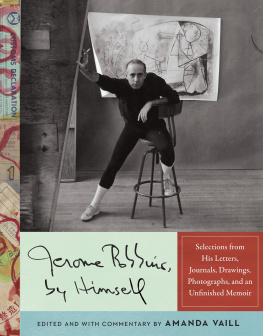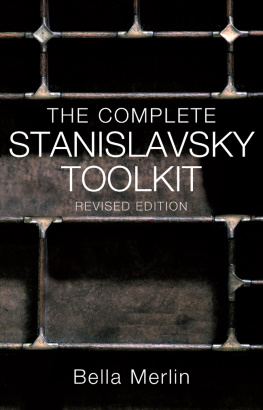Constantin Stanislavski
Constantin Sergeyevich Stanislavski was born on 17th January 1863 into one of the richest families in Russia, the Alekseyevs. Stanislavski was a stage name he adopted in 1884 in order to protect the family name, due to acting being a taboo for someone of his social class.
As a child, his interests included the circus, ballet, and puppetry, but it was not until the family built a theatre on their estate that young Constantin had the opportunity to perform on a stage for the first time. After his debut performance, he began what would go on to become a lifelong series of notebooks that critiqued his acting, and which would eventually lead to his analytical system of training for which he would later become famous.
In 1898 Stanislavski founded the Moscow Art Theatre in co-operation with the playwright and theatre director, Vladimir Nemirovich- Danchenko. It was there that he developed his revolutionary and unique system of training actors which involved breaking down the text to the point that the characters motivations were revealed and absorbed by the performer. This technique enabled the actor to produce a more genuine performance of a particular role.
The first production to receive this treatment was the 17th century melodrama 'Tsar Fyodor'. He went on to successfully apply these techniques to the imagery rich works of Chekov and Gorki. Always keen not to separate the theatre from social context he continued to produce works through the Russian Revolution in 1905 and the Revolution of 1917. In fact, Lenin's personal protection saved Stanislavski from being eliminated along with the Czardom.
In 1918 Stanislavski founded a school for young actors named the First Studio. He continued to write educational works on the methods of drama, the most successful of which being My Life in Art (1925), a work which went on to inspire modern acting legends such as Laurence Olivier and John Gielgud.
Stanislavski died on 7th August 1938.
A History of The Theatre
'The Theatre' is a collaborative form of fine art that uses live performers to present the experience of a real or imagined event. The performers may communicate this experience to the audience through combinations of gesture, speech, song, music, and dance, with elements of art, stagecraft and set design used to enhance the physicality, presence and immediacy of the experience. The specific place of the performance is also named by the word theatre derived from the Ancient Greek word thatron, meaning a place for viewing, itself from theomai, meaning to see, watch or observe.
Modern Western theatre largely derives from ancient Greek drama, from which it borrows technical terminology, classification into genres, and many of its themes, stock characters, and plot elements. The city-state of Athens is where theatre as we know it originated, as part of a broader culture of theatricality and performance in classical Greece that included festivals, religious rituals, politics, law, athletics, music, poetry, weddings, funerals, and symposia. Participation in the city-state's many festivals and attendance at the City Dionysia as an audience member (or even as a participant in the theatrical productions) in particular, was an important part of citizenship.
The theatre of ancient Greece consisted of three types of drama: tragedy, comedy, and the satyr play (a form of tragicomedy, similar in spirit to the bawdy satire of burlesque). The origins of theatre in ancient Greece, according to Aristotle (384322 BCE), the first theoretician of theatre, are to be found in the festivals that honoured Dionysus. These performances (the aforementioned City Dionysia) were held in semi-circular auditoria cut into hillsides, capable of seating 10,00020,000 people. The stage consisted of a dancing floor (orchestra), dressing room and scene-building area (skene). Since the words were the most important part, good acoustics and clear delivery were paramount. The actors (always men) wore masks appropriate to the characters they represented, and each might play several parts.
Athenian tragedy (the oldest surviving form of tragedy) emerged sometime during the sixth century BCE, and flowered during the fifth century BCE from the end of which it began to spread throughout the Greek world and continued in popularity until the beginning of the Hellenistic period. Aeschylus, Sophocles, and Euripides were masters of the genre. The other side of the coin Athenian comedy, is conventionally divided into three periods; Old Comedy, Middle Comedy, and New Comedy. Old Comedy survives today largely in the form of the eleven surviving plays of Aristophanes, while Middle Comedy is largely lost (preserved only in a few relatively short fragments in authors such as Athenaeus of Naucratis). New Comedy is known primarily from the substantial papyrus fragments of Menander.
Western theatre developed and expanded considerably under the Romans. The theatre of ancient Rome was a thriving and diverse art form, ranging from festival performances of street theatre, nude dancing, and acrobatics, to the staging of Plautus's broadly appealing situation comedies, to the high-style, verbally elaborate tragedies of Seneca. Although Rome had a native tradition of performance, the Hellenization of Roman culture in the third century BCE had a profound and energizing effect on Roman theatre and encouraged the development of Latin literature of the highest quality for the stage. This tradition fed into the modern theatre we know today, and during the renaissance, theatre generally moved away from the poetic drama of the Greeks, and towards a more naturalistic prose style of dialogue. By the nineteenth century and the Industrial Revolution, this trend continued to progress.
In England, theatre was immensely popular, but took a big pause during 1642 and 1660 because of Cromwell's Interregnum. Prior to this, 'English renaissance theatre' was witnessed, with celebrated playwrights such as William Shakespeare, Christopher Marlowe and Ben Jonson. Under Queen Elizabeth, drama was a unified expression as far as social class was concerned, and the Court watched the same plays the commoners saw in the public playhouses. With the development of the private theatres, drama became more oriented towards the tastes and values of an upper-class audience however. By the later part of the reign of Charles I, few new plays were being written for the public theatres, which sustained themselves on the accumulated works of the previous decades. Theatre was now seen as something sinful and the Puritans tried very hard to drive it out of their society. Due to this stagnant period, once Charles II came back to the throne in 1660, theatre (among other arts) exploded with influences from France, and the wider continent.
The eighteenth century saw the widespread introduction of women to the stage a development previously unthinkable. These women were looked at as celebrities (also a newer concept, thanks to ideas on individualism that were beginning to be born in Renaissance Humanism) but on the other hand, it was still very new and revolutionary. Comedies were full of the young and very much in vogue, with the storyline following their love lives: commonly a young roguish hero professing his love to the chaste and free minded heroine near the end of the play, much like Sheridan's




